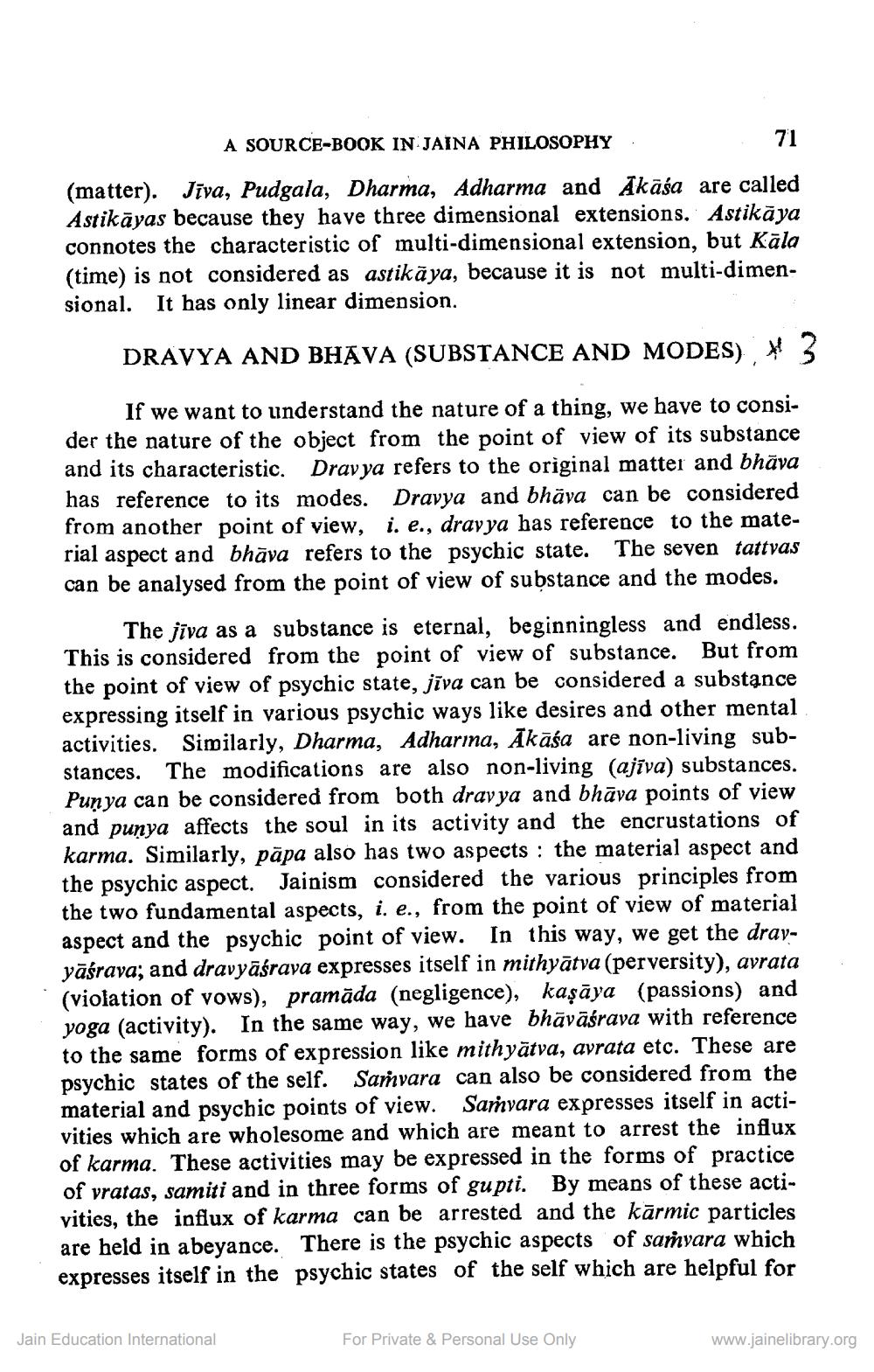________________
A SOURCE-BOOK IN JAINA PHILOSOPHY
71 (matter). Jīva, Pudgala, Dharma, Adharma and Akāśa are called Astikāyas because they have three dimensional extensions. Astikāya connotes the characteristic of multi-dimensional extension, but Kāla (time) is not considered as astikāya, because it is not multi-dimensional. It has only linear dimension.
DRAVYA AND BHAVA (SUBSTANCE AND MODES) # 3
If we want to understand the nature of a thing, we have to consider the nature of the object from the point of view of its substance and its characteristic. Dray ya refers to the original matter and bhāva has reference to its modes. Dravya and bhāva can be considered from another point of view, i. e., drayya has reference to the material aspect and bhāva refers to the psychic state. The seven tattvas can be analysed from the point of view of substance and the modes.
The jīva as a substance is eternal, beginningless and endless. This is considered from the point of view of substance. But from the point of view of psychic state, jīva can be considered a substance expressing itself in various psychic ways like desires and other mental activities. Similarly, Dharma, Adharma, Ākāśa are non-living substances. The modifications are also non-living (ajīva) substances. Punya can be considered from both dravya and bhāva points of view and punya affects the soul in its activity and the encrustations of karma. Similarly, pāpa also has two aspects : the material aspect and the psychic aspect. Jainism considered the various principles from the two fundamental aspects, i. e., from the point of view of material aspect and the psychic point of view. In this way, we get the drayyāśrava; and dravyāśrava expresses itself in mithyātva (perversity), avrata (violation of vows), pramāda (negligence), kaşāya (passions) and yoga (activity). In the same way, we have bhāvāśrava with reference to the same forms of expression like mithyātva, avrata etc. These are psychic states of the self. Saṁvara can also be considered from the material and psychic points of view. Samvara expresses itself in activities which are wholesome and which are meant to arrest the influx of karma. These activities may be expressed in the forms of practice of vratas, samiti and in three forms of gupti. By means of these activities, the influx of karma can be arrested and the kārmic particles are held in abeyance. There is the psychic aspects of sarvara which expresses itself in the psychic states of the self which are helpful for
Jain Education International
For Private & Personal Use Only
www.jainelibrary.org




